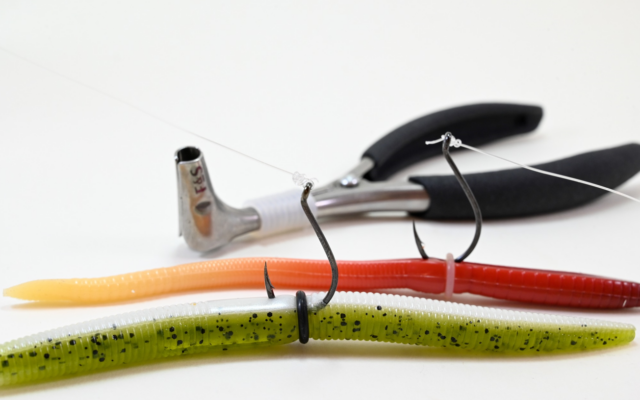
Analysis: The state of Maine is classifying artificial lures incorrectly
By Julie Harris, Bangor Daily News Staff
An artificial lure used to just be a painted or shiny piece of metal in a large teardrop or fish shape with hooks on it.
Now artificial lures can have modern, bright colors and be made of plastics as well as metal. But there is one type of lure — soft plastic ones referred to as rubber worms — that is provoking a heated debate among fishermen.
There are plenty of discussions on fishing-related social media pages about gutting fish such as trout that are full of rubber worms. Fish eat the rubber worms after fishermen discard old ones or they fall off when not put on the hooks correctly.
The rubber worms build up in the stomachs of salmon and trout, but bass expel the soft plastic after a few days.
Even the soft plastics labeled as biodegradable do not biodegrade in a fish’s lifetime. I’m not sure they will biodegrade in mine either.
Although the state adjusts size and bag limits and other fishing regulations, it hasn’t looked at its definition of artificial lures in decades. It’s clearly time for the definition to change. How soft lures are used and their potential to upset the ecosystem should be enough to force discussions.
There are 751 bodies of water in Maine restricted to fishing with artificial lures only out of the state’s 6,000 lakes and ponds and 32,000 miles of rivers and streams. Another 225 are restricted to fly fishing only, really at the request of the people who avidly pursue that branch of the sport, according to Francis Brautigam, the state’s fisheries director.
Artificial lures became more popular about a dozen years ago when people wanted the state to expand fishing opportunities in northern Maine in the fall, especially in catch and release bodies of water, he said.
The counties with the most artificial lure only waters are Piscataquis, Somerset and Aroostook, all areas where the brook trout populations are strong. This constraint is meant to let people fish in areas where live bait fishing is not allowed because of the risk of killing too many catch and release fish, primarily trout, he said.
Using artificial lures also prevents the introduction of unwanted species of fish used as live bait.
In live bait fishing, a fish can swallow the bait far into its body before a fisherman realizes it is on the line, and the damage done to remove the hook often ends in death for the catch, Brautigam said.
Fishing with artificial lures is safer for the fish if you plan to release it back into the water. The barbs on the hook often catch the fish’s lip, making it less likely the fish will be eviscerated when the hook is removed, he said.
But fish will often swallow rubber worms and other soft plastics like live bait, leading the fish to be mortally injured when the hook is removed.
The state’s definition of artificial lure has been very liberal to date, basically anything synthetic is artificial while anything organic is live bait.
Although the state recognizes the need to modernize its definition of artificial lures, it is sticking with its current description for now, Brautigam said.
But classifying lures as artificial because they are synthetic doesn’t consider how they are used, which is critical to how soft plastics should be classified. At the very least, they should be eliminated from artificial lure only waters where sensitive native fish populations live.
The department spends millions of dollars on protecting and preserving the state’s cold water fishery — especially salmonids like brook trout and landlocked salmon — from invasive species, overfishing and other threats. It seems rather ironic that its current definition creates another threat that can easily be mitigated by classifying soft plastics such as rubber worms with live bait.
Soft plastics are more popular in southern waters, where bass fishing is more prevalent, than in northern lakes and ponds. But regardless of the geography, how they are used, not where, should be the determining factor.
I know the state is just starting to talk about revising its definition of artificial lures to reflect emerging technologies, and that the public will take part in those discussions. Everyone needs to consider the implications of any changes.
The state, although it wants to keep things simple with the least regulation possible, says it is managing the lakes, ponds, rivers and streams for the most people to have the best opportunities from them.
That means we all have a say in what happens.
My hope is that the fishing community can have a constructive discussion about soft plastics and their role in the state’s fishery without widening the divisive gap between bass fishermen who primarily use soft plastics and trout and salmon fishermen who find the plastics in Maine’s most prized game fish.